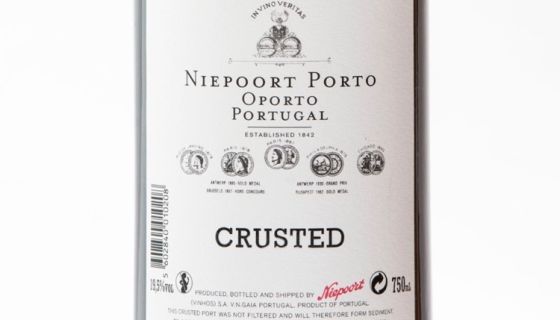From €18, $21.22, 199.75 Danish kroner, CA$39.99, £25.95, SG$66
This deliciously rich, deep and perfectly balanced wine, which you could enjoy right now or keep for a decade or more, was one of the most vibrant and versatile wines at a recent port and cheese tasting I enjoyed last month (full review next week), courtesy of Niepoort and London’s Neal’s Yard Dairy.
It was a great match with both the salty Colston Bassett Stilton and the two traditional cheddars. But port doesn’t have to be relegated to the end of the meal, nor reserved for festive occasions. As I argue in my review of the port and cheese tasting next week, why not make port, cheese and crusty bread the entire meal? And I reckon this has enough freshness and fruit to be enjoyed (perhaps in small sips considering its 19.5% alcohol) with hearty meat dishes.
Crusted port may not sound quite as inviting as crusty bread but it does describe one of the defining characteristics of this style of port: because it has not been filtered, it develops a sediment in the bottle, which means you might want to be careful as you pour towards the end of the bottle, or perhaps decant it.
Crusted is probably one of the least well known styles of port (for a full list, see the port entry in The Oxford Companion to Wine). I believe the term was resurrected by the Symington family* (several of whose wines feature in yesterday’s Portfest) and is described by Dirk Niepoort as ‘like a young vintage port’.
It is usually a blend of two or three vintages. This delicious example, bottled in December 2014 (the date of bottling is helpfully given on the front label), comprises mainly 2013 and 2012 ports from vineyards in the Vale de Mendiz and Pinhão Valley, side valleys of the Douro, where the vines are over 60 and over 100 years old, whereas the bottling from early 2014 was mainly a blend of ports from 2011 and 2012.
Dirk also described it rather self-deprecatingly as ‘the offcuts of vintage port’, which is about as persuasive in marketing terms as ‘crusted’ but it does give you a clue as to the benefits of this style of port, which, like a vintage port, spends a relatively short time in oak compared with wood-aged ports such as tawny – often around two years but up to four – and can be shipped three years after bottling. It will continue to develop in bottle but is ready to drink sooner than most vintage ports and costs a good deal less.
Niepoort Crusted Port is not just about generosity and intensity, however. It has the hallmarks of some of the finest wines from the Douro Valley: freshness, a light floral note and what I call dark-fruited Douro finesse.
The UK price varies from around £26 to £30 and importer Raymond Reynolds reports that the wine is stocked by the following retailers: Drinkmonger (Edinburgh); Reserve, Cork of the North (Manchester); Define Food & Wine (Cheshire); Roberts & Henry (Liverpool); Martinez Wines (Leeds); Buon Vino, Harrogate Fine Wine, Roberts & Speight, Winearray, York Wines, Field & Fawcett (Yorkshire); Weavers of Nottingham, Duncan Murray Wines, The Stroud Wine Company (Midlands); Corks of Cotham (Bristol); The Wine Shop Winscombe, Wadebridge Wines (South West); Bottle Apostle, Philglas & Swiggot, Noble Green, Speciality Drinks, Wimbledon Wine Cellar (London), Dunell’s Wine Merchants (Jersey).
Niepoort’s US importers, Martine’s Wines, distribute throughout much of the US. According to Wine-Searcher, the wine is available in Portugal, Belgium, Germany, the Netherlands, Spain, Germany, Italy, Denmark, Ireland, Canada and Singapore.
*Anthony Symington explained:
'The Symingtons can’t take credit for inventing the term ‘crusted’ but they were definitely behind its resurrection in the 1990s. We’re not sure who originally coined the name ... but after the Portuguese government introduced the legal requirements in the late 1970s that port had to be bottled at source, crusted was left out in the cold as it had been traditionally bottled by merchants in the country of sale. As a result it became a little used unregulated style of port. In the early 1990s the Symingtons lobbied the IVDP to convince them that Crusted was a category worthy of being re-included as one of the legally accepted categories. They accepted and as a result the category was reborn and became widely available again.'















